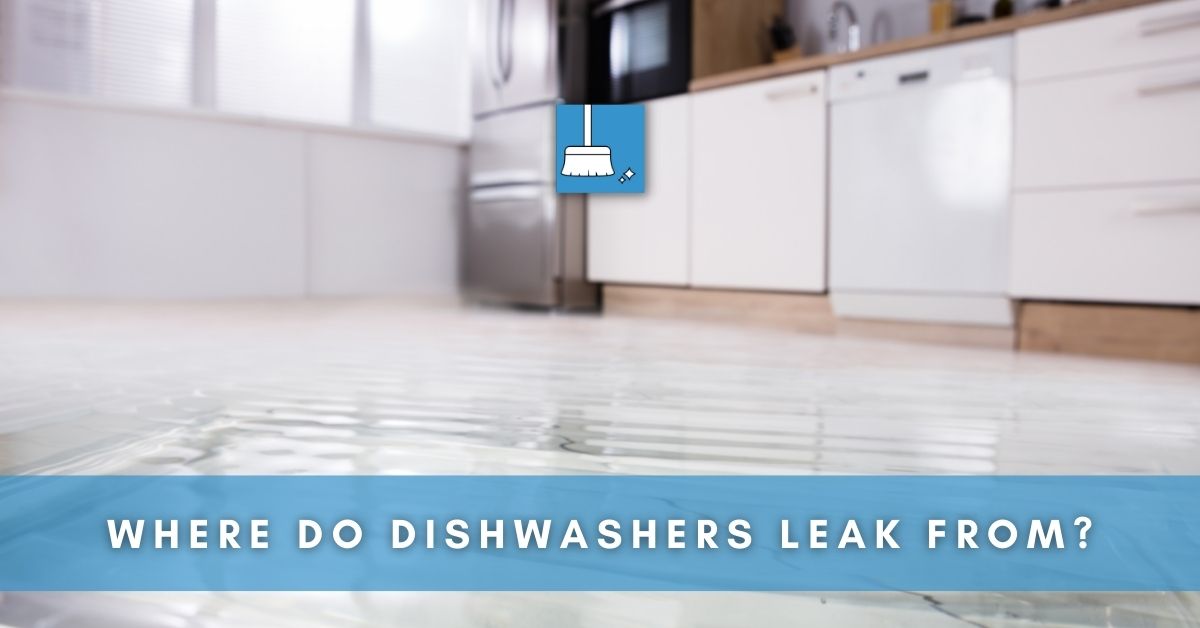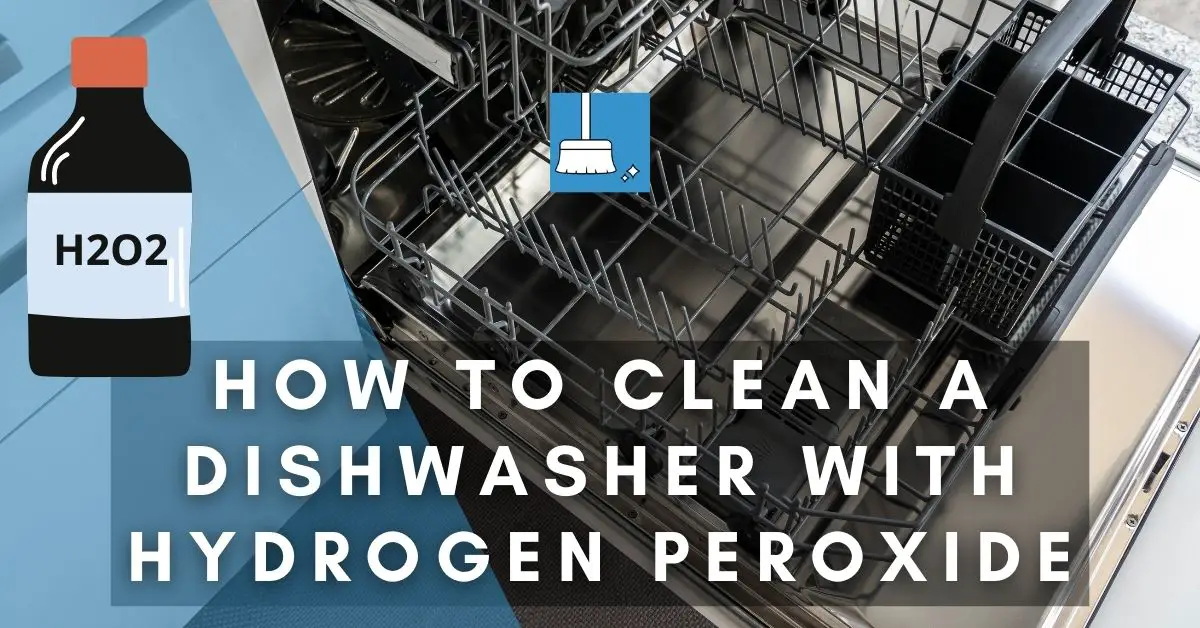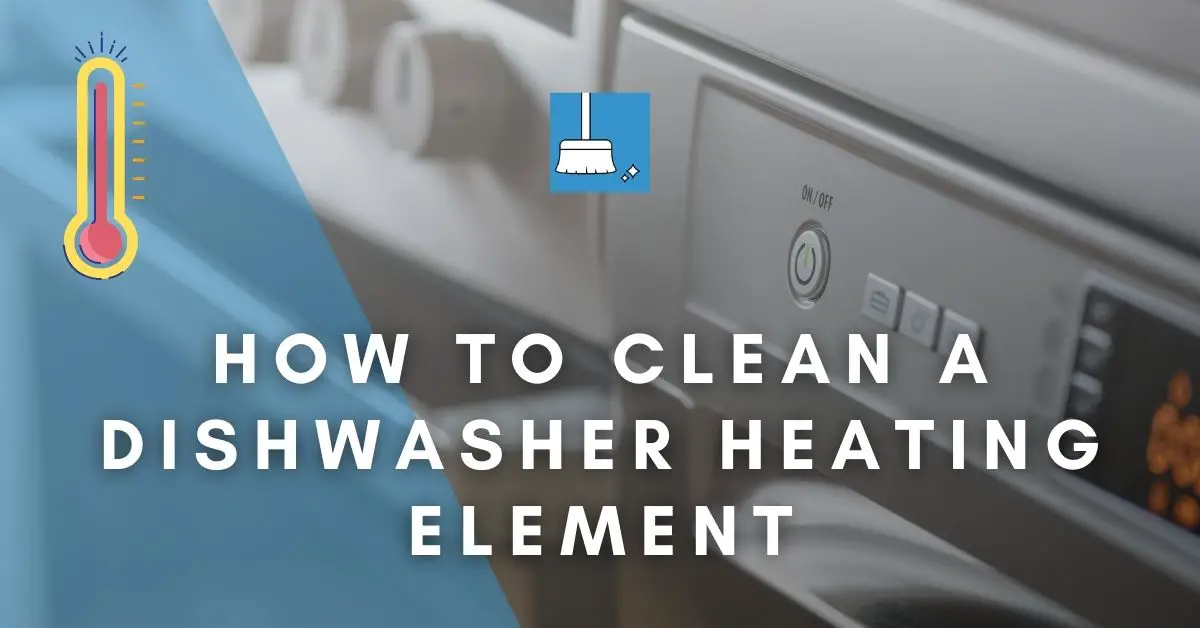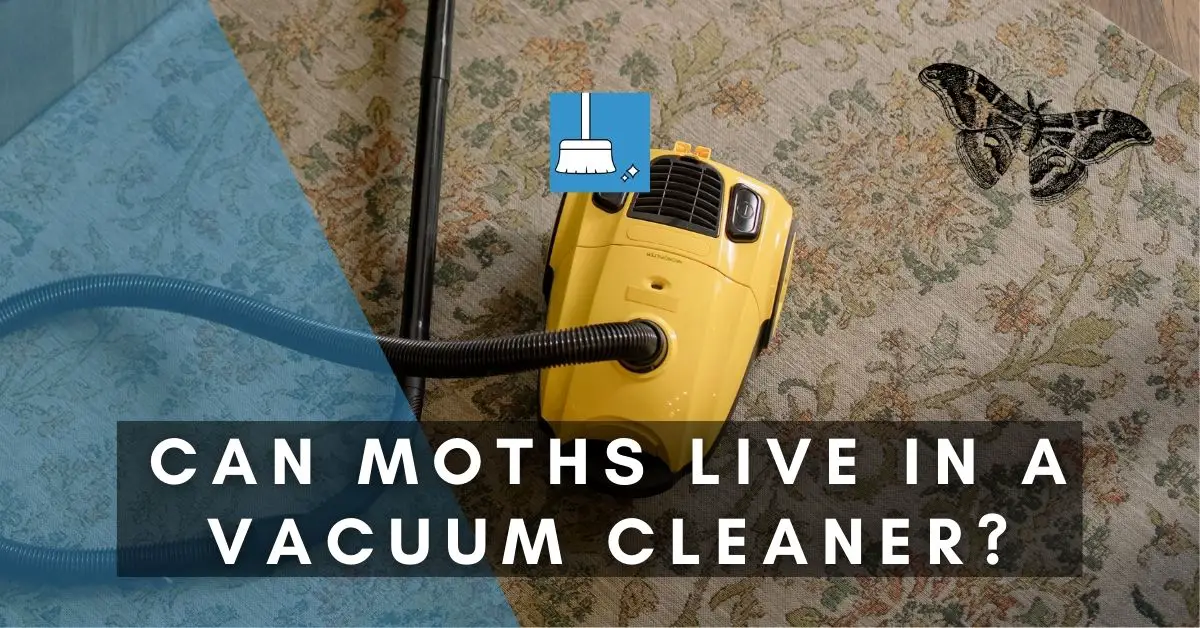It is incredibly frustrating when you buy a dishwasher, and suddenly your kitchen is “underwater”.
Just like most electronic machines, dishwashers come with their risks. For the most part, we have to understand that machines that work with water have a higher chance of breaking, especially if the water manages to sneak into places it shouldn’t be.
In this short article, we will explore where dishwasher leaks can come from, how to find and fix the leaks, and how insurance works when it comes to leaky dishwashers.
Where Do Dishwashers Leak From?
Dishwashers have many components that help them work their best. Unfortunately, with many parts comes a higher risk of breakage. If you find any water under your dishwasher, the best place to start would be to see where the water is coming from.
Let’s take a look at the leading causes of different leaks.
Places Where Your Dishwasher Might be Leaking From!
1- From the Bottom
The Cause
Water coming from the bottom of the dishwasher can be hard to diagnose. Between the motor and the sump seal being underneath the dishwasher and the pipe, hose, and drain pump being right behind it, there are many places a leak can spring from.
One of the most common reasons for a leak from the bottom is a crack in the tub. If your dishwasher has a mainly plastic base, cracks can happen incredibly easily, especially when the dishwasher is being installed.
The bottom gasket in the door could also be damaged. It’s usually made of plastic or rubber and keeps water from leaking out the bottom of the machine.
How To Fix It
If you have a crack in your dishwasher tub, the easiest way to repair it is to fill the crack with silicone caulk.
If the bottom gasket is damaged, you will need to replace it entirely. Luckily they’re not too expensive and can be purchased online or at your local appliance parts store.
2- From the Top
The Cause
A leak coming from the top of your dishwasher could be due to a torn gasket. The gasket is made of rubber and seals the top and sides of a dishwasher. If there is a tear in the gasket at the top, water can leak.
There could also be polystyrene packaging stuck between the gasket and the door. The baskets inside the machine can also cause the door not to close fully if fitted incorrectly.
How To Fix It
If the leak is due to a torn gasket, it will need to be replaced entirely.
However, if there’s something stuck behind the gasket, you can take it out. Inspect the gasket afterward to ensure there isn’t any damage, and then fit it back correctly against the door.
If the baskets are causing the issue, try turning them around until they fit nicely and the door can close properly.
3- From the Side
The Cause
The most common issue for this is again the gaskets. Because a dishwasher has gaskets on the side, if they are torn or fitted incorrectly, it could cause a leak to come from the sides of the machine.
Another issue could be the orientation of the dishwasher. The machine must be perfectly aligned with the floor; otherwise, leaks could occur.
If the dishwasher’s wash arm is broken, the water cannot be cycled out of the machine and causes a buildup that can leak out the sides of the door.
How To Fix It
If the gaskets are the issue, you’ll need to replace them.
If the leak is caused by the machine being unlevel, first look if something under the dishwasher isn’t causing it to lean to one side.
If you find something, remove it and check the dishwasher. If there’s nothing, you might need to put something under the machine to level it, as the dishwasher itself might be unlevel then.
If the wash arm is broken, you’ll need to replace it with a new one.
4- From the Drain Pump
The Cause
If you notice a leak from the drain pump, the seal is most likely the cause. Water can escape the drain pump and even fill the dishwasher if the seal isn’t fitted correctly.
The drain impeller could also be an issue. Food or debris can wash down the drain pump and block the impeller from running, causing water retention in the tub that can leak from the door, bottom, or drain pump.
How To Fix It
If the seal is broken or damaged, you will need to replace it with a new seal. Luckily these are not very expensive, and you can replace them yourself. You will also have to replace the impeller if that’s causing the leak.
Cleaning the filter in your drain pump once a week will keep food and debris from clogging it. However, remove the filter and wash it properly in the sink if that is what is causing the issue.
To clear the actual drain pump, you will need to access it by opening the bottom of the dishwasher. This is best left to a professional.
5- From the Motor
The Cause
At the bottom of your dishwasher, you will find the motor. One of the leading causes of a leak coming from the motor of your dishwasher is a cracked motor shaft seal.
The sump seal can also be damaged, as well as the pump gasket.
How To Fix It
A cracked motor shaft seal will need to be replaced. If the sump seal is the issue, that will also need to be replaced entirely.
In rare cases, you need to replace the entire motor of the dishwasher.
6- From the Hose
The Cause
Your dishwasher has two main hoses – a water inlet hose and a draining hose. The first thing would be to find which hose the leak is coming from.
Either way, the causes are usually the same. The hose clamps could be broken or loose, there could be a crack in the hose itself, or the seal is broken.
There could also be food or debris stuck in the hose itself.
How To Fix It
If the hose clamps are loose, make sure to tighten them. If they are broken, you will have to replace them. You will also have to replace the seal or the entire hose if damaged.
If something is blocking the hose, turn off the water supply and disconnect it from the machine. Try running water through the hose to see if you can dislodge the debris.
If that does not work, try using a wooden spoon handle or a long stick to remove the debris. When it’s clear, connect the hose back to the machine.
7- From the Water Pump
The Cause
Like with the drain pump, the seal is most likely damaged or broken in this case.
There also could be a crack in the body of the water inlet valve. If the diaphragm inside the water inlet valve is damaged, water can keep filling the dishwasher tub and cause leaks from the water pump and the door.
How To Fix It
If the seal is damaged, you only need to replace the seal. However, if the water inlet valve or diaphragm is broken, you will need to replace the entire valve.
Can a Dishwasher Leak Under the Floor?
A dishwasher leak can be damaging to your kitchen floors, especially if they’re made of anything other than tile. If your dishwasher is situated on a wood floor, you need to take precautions.
Dishwashers have been known to leak without showing any signs of leakage because the water will go under the actual floorboards.
If you have a leak in your dishwasher, you won’t notice until the wood starts lifting or cracking, or you can see the water damage from under the machine. The water can also go under your cabinets, ruining them as well. This is why waterproofing is important under the dishwashers.
Put a draining tray or pan under your dishwasher to protect your flooring and cabinets. These will usually have a point at the front where they direct the water, and you can immediately see if you have a leak.
The dishwasher is Leaking Without Running!
Your dishwasher can still leak without even being on or running. We mentioned the leading causes, such as an unlevel machine or a broken water inlet valve.
Water is continuously being fed to your machine through the water pump, so there is water somewhere in your machine unless you turn off the water supply. And if there’s water in your machine, a leak can happen.
How Do I Find a Leak in My Dishwasher?
STEP 1- First, you would need to try and see where the water is coming from. If it’s coming from the bottom, the sides, or the top.
STEP 2- Once you have the general location, the next step would be to inspect all of the components in that location of the machine.
For example, if leaking is coming from the bottom, you would check the motor, sump seal, water inlet valve, and drain pump to see if the leak is coming from any of those components.
If water is coming from the door, you would inspect the gaskets and baskets.
Finding a leak in your dishwasher is mostly trial and error, so eliminating most components would be very beneficial to finding the suspect.
Does Insurance Cover Dishwasher Leaks?
A dishwasher warranty usually covers you for up to 10 years. However, it is only for rust damage to the tub of the dishwasher and the replacement of limited parts. Leaks are only covered if you can provide proof that it is due to a manufacturing fault in one of the components. Leaks due to low maintenance and human fault are not covered.
As for water damage to your home, for the most part, homeowner’s insurance will not cover any damage caused by faulty appliances. Your insurance will cover any damage to your home if you can prove the leak did not happen due to a lack of maintenance or human error.
If you want to try and claim from your insurance, get an insurance lawyer to claim for you, as you will have a higher chance of it being covered.
Final Thoughts!
For the most part, dishwasher leaks are caused by faulty seals or broken hoses, which are easy to fix. However, sometimes bigger issues afoot will cost you quite a bit of money.
The number one way of discerning where the leak in your dishwasher is coming from is by using the trial and error method to find it. And the best way to keep a leak from happening is by regular maintenance on your machine and making sure the hoses and filters are cleaned regularly.






Pingback: Do Dishwashers Come With A Water Supply Line? (Explained!) »
Pingback: Are Dishwasher Tablets Flammable? (5 Causes Of Fire) »
Pingback: Dishwasher Won’t Fit With New Flooring (Solutions!) »
Pingback: Can Dishwasher Cause A Fire? (With Prevention Tips!) »